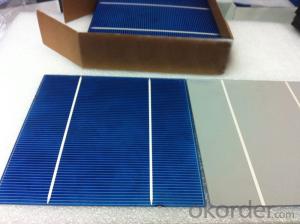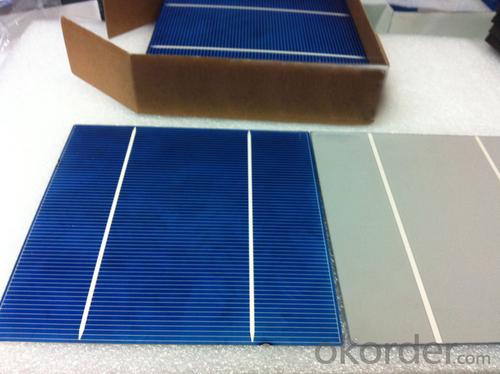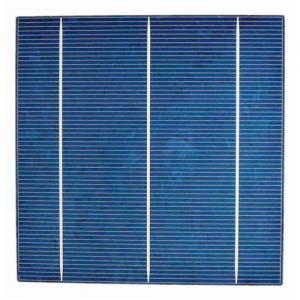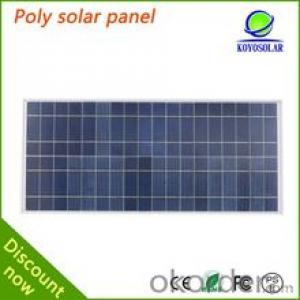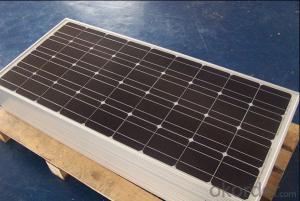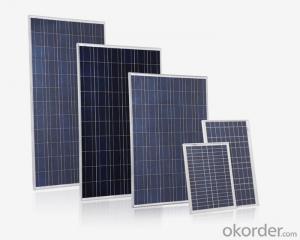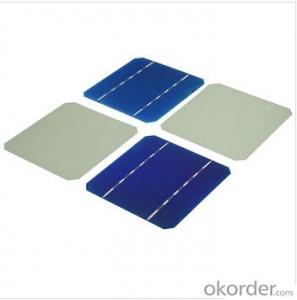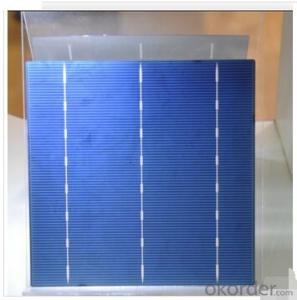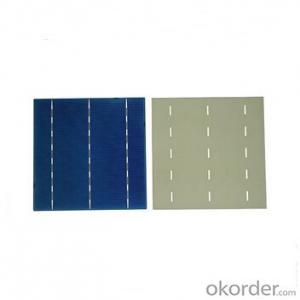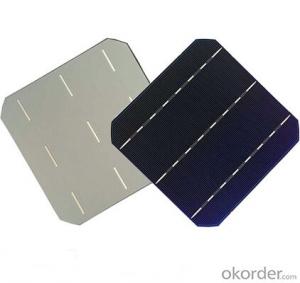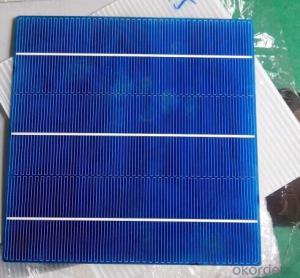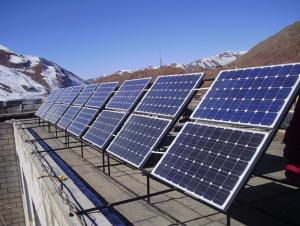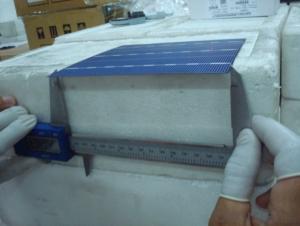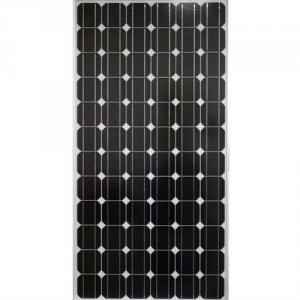Dye Sensitized Solar Cells - High Quality Poly-18% Effy Solar Cells
- Loading Port:
- China Main Port
- Payment Terms:
- TT OR LC
- Min Order Qty:
- -
- Supply Capability:
- -
OKorder Service Pledge
Quality Product, Order Online Tracking, Timely Delivery
OKorder Financial Service
Credit Rating, Credit Services, Credit Purchasing
You Might Also Like
Specifications
1. High efficiency and High power.
2. Long-term electrical stability.
3. Lowest price and Fastest delivery.
4. Good quality.
Advantage:
1. High efficiency and High power.
2. Long-term electrical stability.
3. Lowest price and Fastest delivery.
4. Good quality and good service.
5.Bulk supply
6. Good Warranty
7.Big Sale
8.Made in Taiwan/Germany etc for high quality
9.More than 35 years on the lifetime.
10 DHL/Fedex/UPS/TNT/EMS etc
11 No anti-dumping tax
- Q: Can solar cells be used in water desalination?
- Yes, solar cells can be used in water desalination. Solar-powered desalination systems, such as solar stills and solar-powered reverse osmosis, utilize solar energy to convert saltwater into fresh water, making it an environmentally-friendly and sustainable solution for water scarcity in coastal areas.
- Q: What is the role of solar cells in powering remote monitoring systems?
- Solar cells play a crucial role in powering remote monitoring systems as they provide a sustainable and renewable source of energy. By converting sunlight into electricity, solar cells eliminate the need for traditional power sources or frequent battery replacements in remote locations. This ensures continuous operation of monitoring systems, allowing data collection, transmission, and analysis to occur even in areas with limited access to the electrical grid. Solar cells enable reliable and environmentally friendly power supply, making them an essential component for remote monitoring systems.
- Q: Can solar cells be used in underwater applications?
- Yes, solar cells can be used in underwater applications. However, special considerations need to be taken into account, such as protecting the cells from water damage and optimizing their performance in low light conditions. Waterproof enclosures and specialized coatings can help ensure the durability and efficiency of solar cells in underwater environments.
- Q: Can anybody tell me the power supply of the home solar cell?
- In my old place, all I was using was the 50WAT solar cells, which is definitely good and useful for all my daily use.
- Q: What are the advantages of monocrystalline silicon and polycrystalline silicon in solar power?
- and the production process of polysilicon can be achieved by casting method and direct solidification method. Grain size of the grain size of centimeters; [4] due to nearly a decade of monocrystalline silicon technology research and development soon, in which the process is also used in the production of polycrystalline silicon cells, such as the choice of corrosion emission junction, back surface field, , Surface and body passivation, fine metal gate electrode, the use of screen printing technology can reduce the width of the gate electrode to 50 microns, the height of 15 microns or more, rapid thermal annealing technology for polysilicon production can greatly shorten the process time,
- Q: What is the impact of dust and dirt on solar cell efficiency?
- Dust and dirt can have a significant impact on solar cell efficiency. When dust and dirt accumulate on the surface of solar cells, they block sunlight from reaching the cells, reducing their ability to generate electricity. This decrease in solar cell efficiency can lead to a decrease in overall power output and, consequently, a decrease in the overall efficiency of a solar panel or system. Regular cleaning and maintenance of solar panels are necessary to ensure optimal performance and maximize energy production.
- Q: Can solar cells be used in areas with high humidity?
- Yes, solar cells can be used in areas with high humidity. While high humidity can affect the performance of solar cells to some extent, modern solar cell technology is designed to withstand varying environmental conditions, including high humidity. Additionally, regular maintenance and protective coatings can help mitigate any potential humidity-related issues, allowing solar cells to efficiently generate electricity in humid areas.
- Q: What are the applications of solar cells?
- traffic areas: such as beacon lights, traffic / railway lights, traffic warning / sign lights, street lamps, high altitude obstruction lights, highway / railway wireless telephone booths, unattended road power supply.
- Q: What is the typical lifespan of a solar cell?
- The typical lifespan of a solar cell is around 25 to 30 years, although some high-quality solar panels can last up to 40 years with proper maintenance and care.
- Q: What is the role of bypass diodes in shading situations?
- The role of bypass diodes in shading situations is to prevent the shaded cells of a solar panel from reducing the overall power output of the panel. By creating an alternative path for the current to bypass the shaded cells, bypass diodes ensure that the unshaded cells can still generate electricity efficiently. This helps to optimize the performance and reliability of the solar panel system in the presence of shading or partial shading conditions.
Send your message to us
Dye Sensitized Solar Cells - High Quality Poly-18% Effy Solar Cells
- Loading Port:
- China Main Port
- Payment Terms:
- TT OR LC
- Min Order Qty:
- -
- Supply Capability:
- -
OKorder Service Pledge
Quality Product, Order Online Tracking, Timely Delivery
OKorder Financial Service
Credit Rating, Credit Services, Credit Purchasing
Similar products
Hot products
Hot Searches
Related keywords
